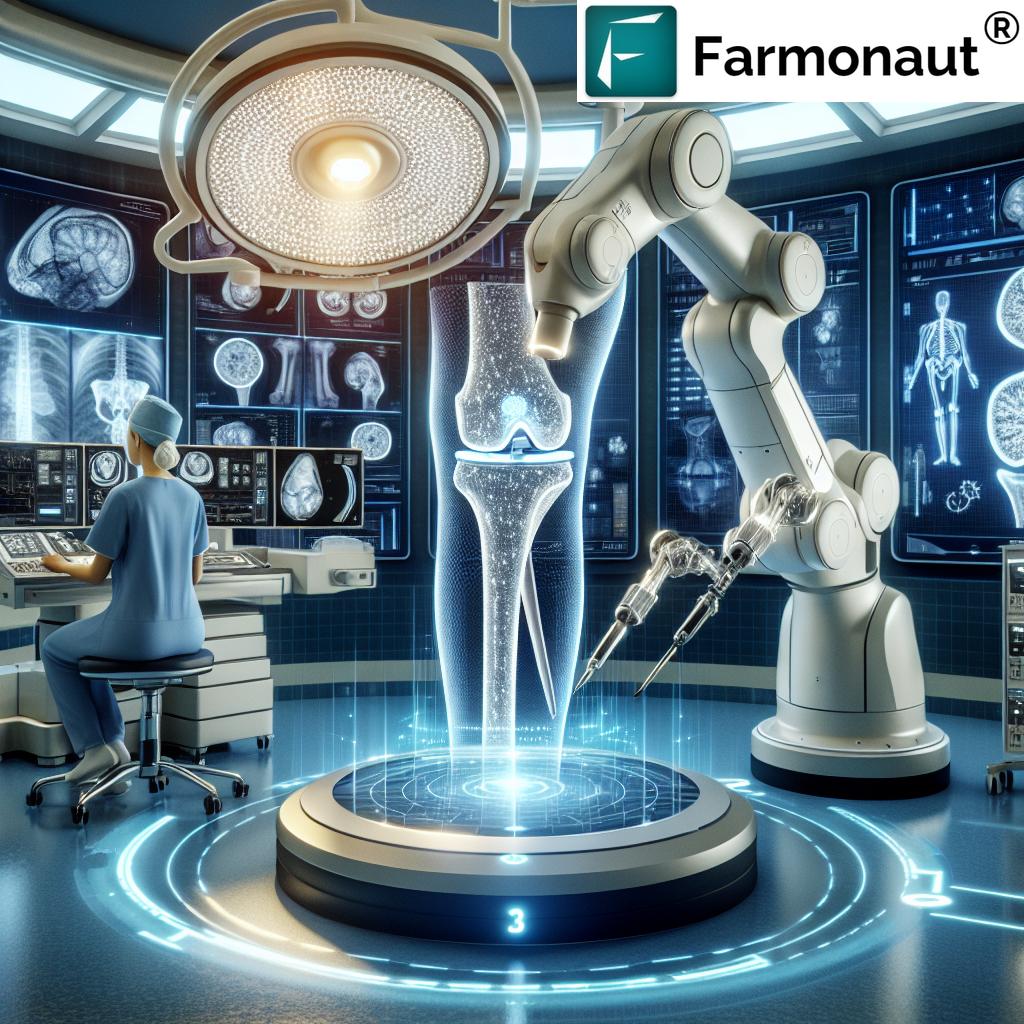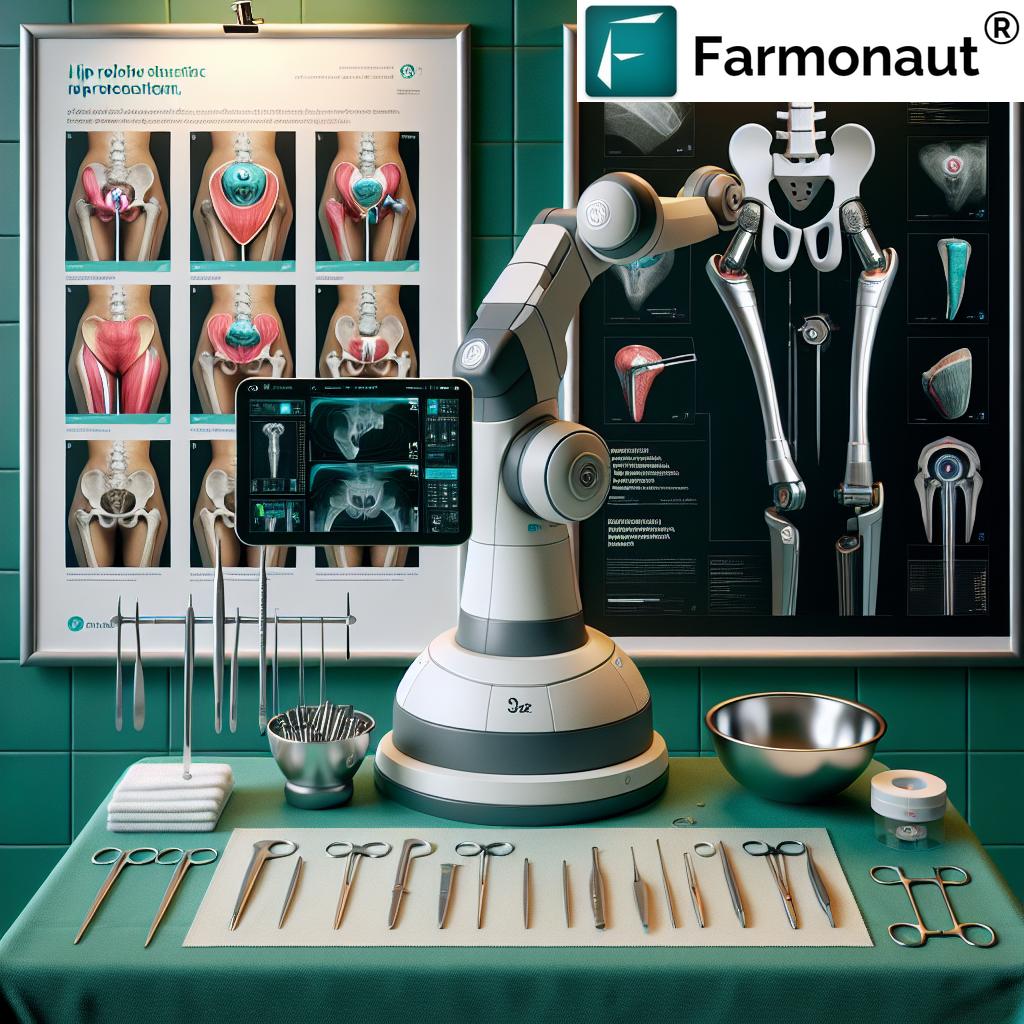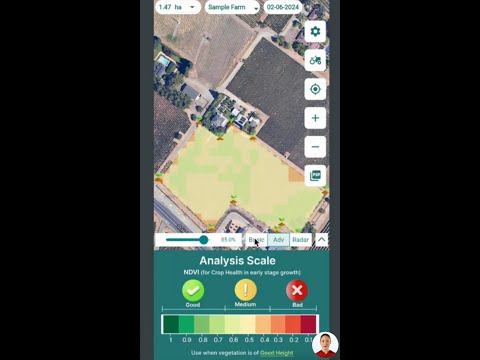Revolutionizing Orthopedic Care in Missoula: Robotic-Assisted Joint Replacements Offer Precision and Personalized Treatment
“Robotic-assisted joint replacement technology in Montana enhances precision for knee and hip procedures, potentially improving outcomes for thousands.”
In the picturesque city of Missoula, Montana, a groundbreaking advancement in orthopedic care is taking center stage. We’re witnessing a remarkable transformation in the field of joint replacement surgery, as robotic-assisted technology ushers in a new era of precision and personalized treatment. This innovative approach is not just changing the game for surgeons; it’s offering renewed hope for patients seeking to reclaim their mobility and quality of life.
The Dawn of Robotic-Assisted Joint Replacements in Missoula
At the forefront of this orthopedic revolution is Missoula Bone & Joint, where cutting-edge robotic technology is being integrated into knee and hip replacement procedures. This advanced orthopedic surgery technology is set to redefine the standards of care for patients suffering from debilitating joint conditions.
Dr. Cameron Barton, a distinguished orthopedic surgeon at the center, emphasizes that while the robotic system enhances precision, it does not replace the surgeon’s expertise. “The robotic assistance serves as an advanced tool, augmenting our capabilities and allowing for unprecedented accuracy in joint replacements,” Dr. Barton explains.

Understanding Robotic-Assisted Joint Replacement
Robotic-assisted joint replacement represents a significant leap forward in orthopedic surgery. This innovative joint replacement technique combines the skill of experienced surgeons with the precision of robotic technology. Here’s how it works:
- Pre-operative Planning: Advanced imaging creates a 3D model of the patient’s joint.
- Personalized Approach: Surgeons use this model to plan the procedure tailored to the patient’s unique anatomy.
- Intra-operative Guidance: During surgery, the robotic arm provides real-time feedback and assistance.
- Precision Execution: The surgeon controls the robotic arm to execute the plan with millimeter accuracy.
This technology offers benefits of robotic surgery for arthritis and other joint conditions, potentially leading to improved outcomes and faster recovery times.
The Precision Advantage in Joint Replacements
One of the primary advantages of robotic-assisted joint replacement is its unparalleled precision in component sizing and positioning. This level of accuracy is crucial for the long-term success of joint replacements, particularly in complex cases involving severe arthritis or previous fractures.
Dr. Barton notes, “With robotic guidance in complex surgeries, we can achieve accurate component alignment even in patients with significant deformities. This technology allows us to navigate challenging anatomical variations with greater confidence.”
Personalized Pre-operative Planning
Robotic-assisted technology elevates the concept of personalized medicine in orthopedic care. The system enables surgeons to create highly detailed, patient-specific pre-operative plans. This personalized pre-operative planning process involves:
- Creating a 3D model of the patient’s joint using CT scans
- Analyzing the unique anatomical structure and alignment
- Simulating various component sizes and positions
- Optimizing the surgical approach based on individual patient needs
This level of personalization ensures that each procedure is tailored to the patient’s specific anatomy, potentially leading to better outcomes and patient satisfaction.
Real-time Guidance and Adjustments
During the operation, the robotic system provides continuous, real-time feedback to the surgeon. This feature allows for immediate adjustments based on the patient’s actual anatomy, which may differ slightly from pre-operative imaging. The benefits of this real-time guidance include:
- Enhanced accuracy in bone cuts and implant placement
- Ability to fine-tune component positioning for optimal alignment
- Reduced risk of human error
- Potential for improved joint function and longevity
“Educational seminars on robotic-assisted joint replacements are reaching hundreds of Montana residents, increasing awareness of this cutting-edge technology.”
Comparing Traditional and Robotic-Assisted Joint Replacements
To better understand the advantages of robotic-assisted joint replacement, let’s compare it with traditional methods:
| Surgical Aspect | Traditional Method | Robotic-Assisted Method |
|---|---|---|
| Pre-operative Planning | 2D imaging, manual planning | 3D modeling, computerized planning |
| Surgical Precision | Moderate precision | High precision |
| Component Alignment | Manual alignment | Computer-guided alignment |
| Real-time Adjustments | Limited real-time adjustments | Continuous real-time guidance |
| Average Recovery Time | 6-8 weeks | 4-6 weeks (estimated) |
| Potential Outcomes | Good to excellent | Excellent with potential for improved longevity |
While traditional methods have a proven track record, robotic-assisted procedures offer enhanced precision and personalization, potentially leading to better outcomes and faster recovery times.

Benefits for Patients with Complex Joint Issues
Robotic-assisted joint replacement technology offers significant advantages for patients with complex joint issues. Dr. Barton highlights that this technology is particularly beneficial for:
- Patients with severe arthritis
- Cases involving previous fractures
- Individuals with significant joint deformities
- Revision surgeries where precise component placement is crucial
In these complex cases, the robotic system’s ability to provide accurate alignment and personalized treatment plans can make a substantial difference in surgical outcomes.
The Human Element in Robotic-Assisted Surgery
While the robotic technology offers impressive capabilities, it’s crucial to understand that it remains a tool in the hands of skilled surgeons. Dr. Barton emphasizes, “The robotic system enhances our abilities but doesn’t replace our expertise. We maintain full control throughout the procedure, using the technology to inform our decisions and guide our actions.”
This human-technology partnership ensures that patients benefit from both the precision of robotics and the experience and judgment of seasoned orthopedic surgeons.
Flexibility in Surgical Approach
One of the key advantages of integrating robotic assistance in joint replacements is the flexibility it offers. Dr. Barton notes that if, during surgery, the robotic system is deemed unsuitable for a particular case, the team can seamlessly transition to traditional techniques. This adaptability ensures that patient safety and surgical effectiveness remain the top priorities.
Educational Initiatives and Community Engagement
Missoula Bone and Joint is taking proactive steps to educate the community about this groundbreaking technology. They are hosting a free educational seminar on February 20 at 6 p.m., which will include:
- A live demonstration of the robotic system
- Q&A session with Dr. Barton
- Information on how robotic-assisted procedures can help maintain an active lifestyle
These educational seminars on robotic surgery play a crucial role in informing the public about advancements in orthopedic care and helping patients make informed decisions about their treatment options.
The Future of Orthopedic Care in Missoula
As orthopedic technology advancements continue to evolve, the future of joint replacement surgery in Missoula looks promising. The adoption of robotic-assisted technology at Missoula Bone & Joint signifies a commitment to providing cutting-edge care to the community. Patients can look forward to:
- More precise and personalized treatments
- Potentially faster recovery times
- Improved long-term outcomes for joint replacements
- Access to advanced surgical techniques previously available only in larger urban centers
This advancement in orthopedic care not only benefits individual patients but also positions Missoula as a leader in innovative medical technologies.
Patient Considerations and Expectations
While robotic-assisted joint replacement offers numerous benefits, it’s important for patients to have realistic expectations. Here are some key points for patients to consider:
- Candidacy: Not all patients may be suitable candidates for robotic-assisted surgery. A thorough evaluation by an orthopedic specialist is necessary.
- Recovery: While recovery times may potentially be shorter, patients still need to follow post-operative care instructions diligently.
- Outcomes: Although precision is enhanced, individual results can vary based on factors like overall health, adherence to rehabilitation protocols, and pre-existing conditions.
- Cost: Patients should consult with their healthcare providers and insurance companies regarding coverage for robotic-assisted procedures.
The Role of Rehabilitation in Successful Outcomes
While robotic-assisted surgery can enhance precision and potentially improve outcomes, the role of post-operative rehabilitation remains crucial. A comprehensive rehabilitation program, tailored to each patient’s needs, is essential for:
- Regaining strength and flexibility in the joint
- Ensuring proper healing and alignment
- Maximizing the benefits of the precise surgical placement
- Achieving optimal functional outcomes
Patients undergoing robotic-assisted joint replacements should be prepared to actively participate in their rehabilitation process to fully realize the benefits of this advanced surgical technique.
Expanding Access to Advanced Orthopedic Care
The introduction of robotic-assisted joint replacement technology in Missoula represents a significant step in expanding access to advanced orthopedic care in Montana. This development means that:
- Patients in the region can receive state-of-the-art treatment without traveling to larger metropolitan areas
- Local surgeons can offer a wider range of treatment options to their patients
- The community benefits from improved healthcare infrastructure and expertise
As this technology becomes more widespread, it has the potential to elevate the standard of orthopedic care across the state, benefiting patients from all walks of life.
Frequently Asked Questions
To address common queries about robotic-assisted joint replacements, we’ve compiled a list of frequently asked questions:
- Is robotic-assisted surgery safe?
Yes, robotic-assisted surgery is considered safe and is FDA-approved. It enhances the surgeon’s precision but remains under the control of the experienced orthopedic surgeon at all times. - How long does a robotic-assisted joint replacement surgery take?
The duration can vary, but typically, robotic-assisted procedures take about the same time as traditional surgeries, sometimes even less due to increased precision. - Will my insurance cover robotic-assisted joint replacement?
Many insurance plans cover robotic-assisted surgeries, but it’s best to check with your insurance provider for specific coverage details. - Is the recovery time shorter with robotic-assisted surgery?
While individual experiences may vary, many patients report faster recovery times due to the precision of the procedure, which can result in less tissue damage. - Are there any risks specific to robotic-assisted surgery?
The risks are similar to traditional joint replacement surgery. The robotic system is designed to enhance precision and potentially reduce certain risks associated with manual techniques.
Conclusion: A New Chapter in Orthopedic Care
The introduction of robotic-assisted joint replacement technology at Missoula Bone & Joint marks a significant milestone in orthopedic care for Montana. This advanced technology promises to deliver more precise, personalized treatments for patients suffering from joint issues, potentially leading to improved outcomes and faster recoveries.
As we embrace this new era of orthopedic innovation, it’s clear that the combination of skilled surgeons and cutting-edge technology will play a crucial role in helping patients maintain active, pain-free lifestyles. The future of joint replacement surgery in Missoula looks brighter than ever, offering hope and improved quality of life for those in need of orthopedic care.
For those interested in learning more about robotic-assisted joint replacements or attending the upcoming educational seminar, we encourage you to contact Missoula Bone & Joint. Embrace the future of orthopedic care and take the first step towards a more mobile, pain-free life.



